Joy Marie Clarkson's Blog, page 9
May 21, 2019
Boredom

Dolce far Niente by Auguste Toulmouche, 1876.
Boredom is the modern mood.
Our world seems to flit back and forth between excessive stimulation and extreme boredom. We have at our fingertips perpetual entertainment, and yet we find ourselves existentially adrift, listless, vacant. Is this boredom unique to our times? Or is it only another epoch in the long lineage of restless humanity?
In today’s episode, with boredom expert Dr. Rebekah Lamb, we explore the social, literary, and spiritual dimensions of boredom, and what it looks like to turn our boredom into something fruitful and wholesome, rather than destructive and inert.
If you enjoy listening to this podcast half as much as I enjoyed recording it, I know you’ll be delighted. :)

Dr Rebekah Lamb is Lecturer in Theology, Imagination and the Arts. Her research interests span from Victorian period to the present; the Pre-Raphaelites and their affiliate circles; medieval revivalism; affect theory (particularly boredom studies); interfaces between theology and film studies, journalism, and social media; Christian personalism, education, and liturgy.
While preparing this podcast, I amused myself by googling pictures to do with boredom. The result was very pleasing. Please enjoy this melange of apathetic women…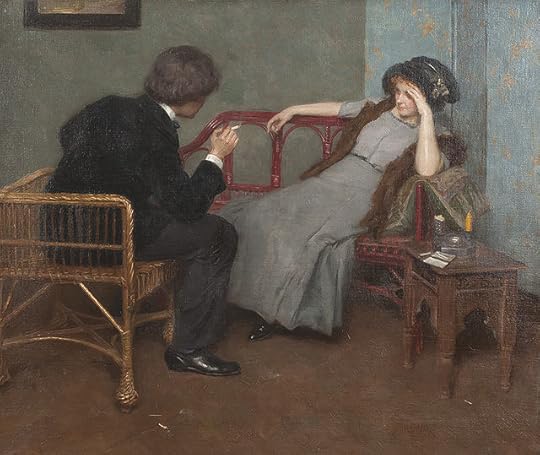
No, no… everything you’re saying is extremely interesting… Do go on…
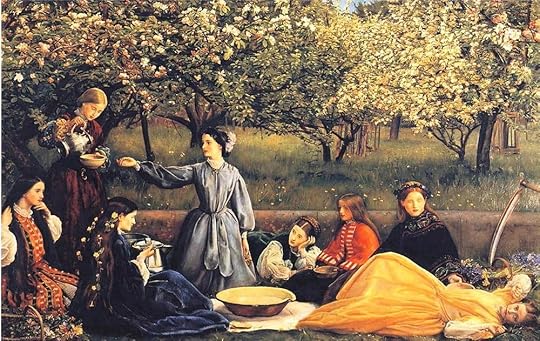
So bored she can’t even be bothered to sit up…
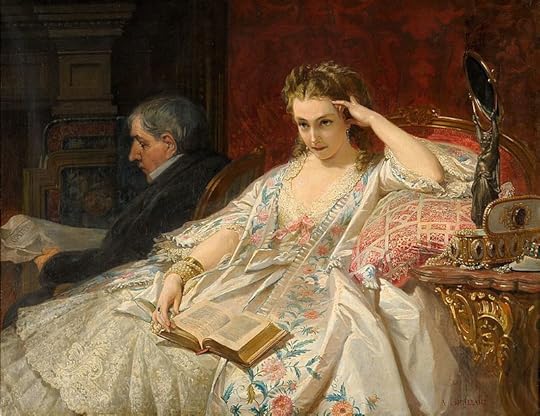
Not even this novel can save me from ennui…

Perhaps boredom could lead you to solve crimes! See: it’s not all bad!!Further Reading…
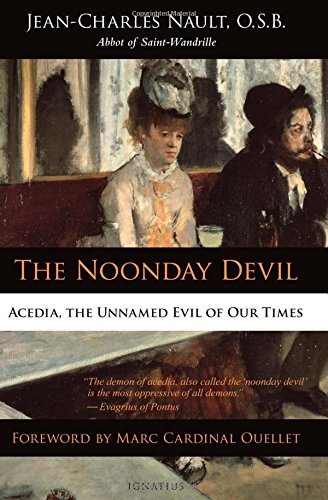
By Dom Jean-Charles Nault O.S.B.
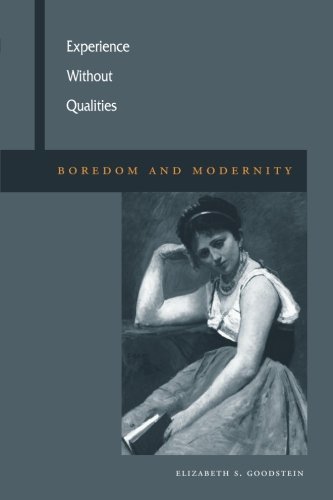
Experience Without Qualities: Boredom and Modernity
By Elizabeth S. Goodstein
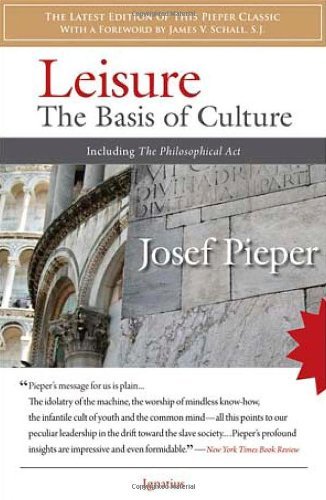
Leisure: The Basis of Culture
By Josef Pieper
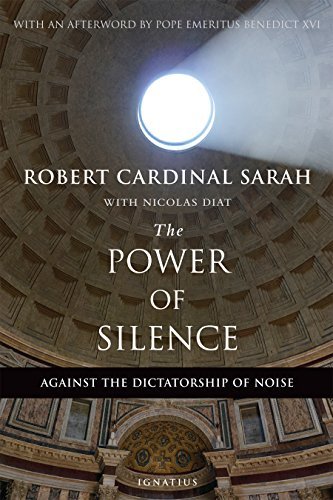
The Power of Silence: Against the Dictatorship of Noise
By Cardinal Robert Sarah
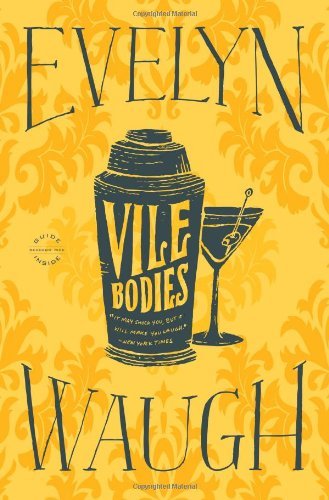
Vile Bodies
By Evelyn Waugh
Rebekah mentioned this book about the “Bright Young Things” wiling away their boredom destructively…
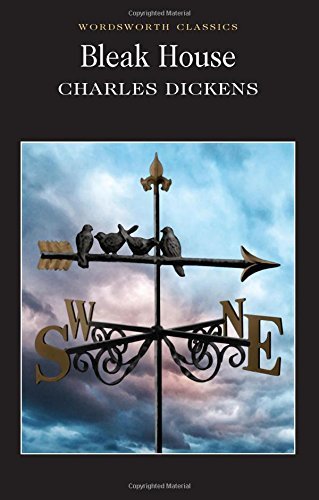
Bleak House (Wordsworth Classics)
By Charles Dickens
One of my favourite Dickens novels. Includes the exquisitely bored Lady Dedlock.
May 14, 2019
An Enchanted Sky

Star cluster NGC 346, Hubble Space Telescope
When I consider your heavens,
the work of your fingers,
the moon and the stars,
which you have set in place,
what is mankind that you are mindful of them,
human beings that you care for them?
— Psalm 8:3-4
Stargazing is universal.
Throughout all times, in all places, in all cultures, humans have found themselves gazing at the heavens in awe. One of the things I look most forward to about going home to Colorado is star gazing. On clear nights, my siblings and I like to drive to the foothills of the mountains where there is very little light pollution, and lay on our backs in an empty field, overwhelmed by the wonder of the abundant night sky, dusted with stars. I’m always struck by a dichotomy when I look at the stars. The first, and perhaps most obvious, thought that strikes me is that I am small, infinitesimal, insignificant. The second thought that strikes me with equal force is the complete miraculousness of being alive. As insignificant as I feel, I also feel terribly alive, aware of the seer miracle that I came to exist, here, in this moment, that I came to love these people, that my life will be short and full of meaning.
This is the gift the stars give us: an awareness the insignificance and miraculousness of our existence.
People often say the modern world is disenchanted.This is often attributed to the advent of modern science. It is supposed that prior to modern science, people saw the world as a mystery of order and chaos, impinged upon by spiritual forces, magical in all its workings. Modern science, it is supposed, has revealed to us quite a different picture. This view would say that the material world is less of a mystery and more of a machine.
But is it necessarily true to say that science has disenchanted the material world?Today we will explore this question with the night sky as our conversation partner. My hunch is that the cosmos is not any less wondrous, mysterious, or enchanted than it was in the twelfth century. The world is not disenchanted, we've only grown blind to its wonder.
I hope this episode will awaken you to the wonder of the music of spheres.
Visual — Spheres and Telescopes
Ptolemaic orbits forming an armillary sphere,
Andreas Cellarius, Harmonia Macrocosmica, 1661.
“Medieval cosmology was centered around the concept of the Ptolemaic universe, named after Greek astronomer Ptolemy (ca. 150 CE). In this geocentric (earth-centered) model, the earth was the motionless center of the universe, with the rest of the universe revolving around it in spheres. Ptolemy's work was based on Aristotle's (384-322 BCE) idea of an ordered universe, divided into the sublunary, or earthly, region which was changeable and corruptible, and the heavenly region, which was immutable and perfect. Aristotle posited that the heavens contained 55 spheres, with the Primum Mobile, "Prime Mover" or "First Moveable", giving motion to all the spheres within it.
Centermost in this cosmology was the Earth. The sublunary sphere was comprised of the four elements (earth, water, fire, and air). Next followed the spheres of the 7 planets (which included the sun and the moon). After these came the Circle of the Fixed Stars (including the signs of the Zodiac). Outermost in this scheme was the Primum Mobile, sometimes divided into three spheres of the Crystalline Heaven, the First Moveable, and the Empyrean, or highest heaven.
While not scientifically supportable, this cosmology was eagerly embraced and adapted to fit Medieval theology. The Prime Mover became the Christian God, the outermost sphere became heaven, and the earth was the center of God's attention. The spheres, moved by the Prime Mover, existed and rotated in perfect harmony, creating the “music of the spheres.” Man, habitant of the sublunary sphere which was corruptible since Adam's fall, could no longer hear this music.”
Jokinen, Anniina. “Medieval Cosmology.” Luminarium. 31 Jan 2012. )http://www.luminarium.org/encyclopedia/medievalcosmology.htm>

Creation of the World, Nuremberg Chronicles, 1493
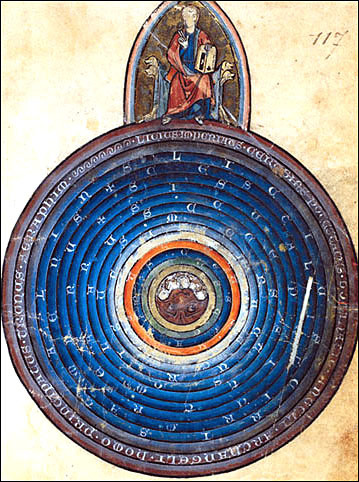
Earth at the center of the Spheres.
Copy of Gossuin de Metz, 13th c.

We now know we are no longer the centre of the universe.
Does this drain the sky of its wonder?
Is there only loneliness and lightyears?
Are we doomed forever to speak of Space and not the Heavens?
Hubble Space Telescope…
These are all real images captured in outer space by the Hubble Space Telescope, which has been in orbit since 1990. You can find the top 100 Hubble images at here. I spent a long time yesterday evening looking at these images while listening to Holst’s Planets (that’s coming up soon). I was filled with awe, a deep awareness of both the relative insignificance of my life and the miraculousness of it.
As I listened and looked I couldn’t helping thinking: how can any of us call this a disenchanted world?
Spiral Galaxy M51, Hubble Space Telescope

Eagle Nebula, Hubble Space Telescope.

Star V838 Monocerotis
Our response to seeing the vast beauty of the heavens needn’t be “I am alone in a dark and cavernous void” it could also be the words of the Psalmist…
When I consider your heavens, the work of your fingers, the moon and the stars, which you have set in place,what is mankind that you are mindful of them, human beings that you care for them?
You have made them[b] a little lower than the angels and crowned them with glory and honor.
You made them rulers over the works of your hands; you put everything under their feet:
— Psalm 8
2. Literary — The Ransom Trilogy
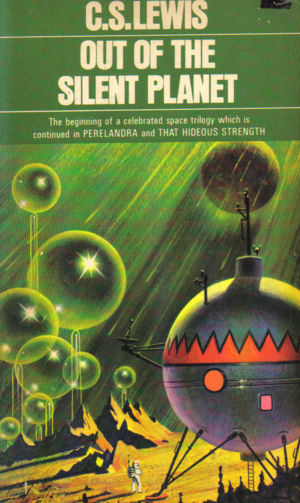
Perhaps one of the great thing art can do is help us regard things in a new way.
I think one of the things Lewis aimed to do with his writing was both to work within the mythological vision passed through medieval cosmology, but also to pass on a new vision of a sacramental world. A great deal of Lewis’ academic life was spent thinking about the heavens. In The Discarded Image, a collection of lectures Lewis gave at Oxford University, he discusses the way the Copernican revolution changed the face of culture and literature, and how it left us with an image of the stars that as cold, vacant, and dark.
James K.A. Smith summarises this shift as a “move from a ‘cosmos’ to a ‘universe’...from an ordered, layered, hierarchical, shepherded place to… an infinite, cavernous, anonymous space” (How (Not) to be Secular: Reading Charles Taylor (Grand Rapids: Eerdmans Publishing Company, 2014), 31).
Lewis didn’t want to throw out scientific discoveries so he could hold onto a comforting but ultimately incorrect understanding of the cosmos, but neither did he want to sever the literary and cultural branch upon which most of our treasured works of art rest. So, in much of his work, he attempts to form a synthesis of the two— the old and the new, the ordered and the mysterious, the immense and the particular.
In Narnia, he draws on the old tradition to make an imaginative world meaningful.
in Cosmos Trilogy, he takes us to see that the stars were never only great balls of gas.
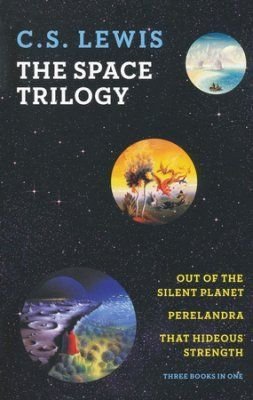
The Space Trilogy (Out of the Silent Planet, Perelandra, That Hideous Strength) by C.S. Lewis (2011) Paperback
By C.S Lewis
In the Space Trilogy (which Lewis would have preferred to be called the Cosmos Trilogy), Lewis describes the adventures of Ransom as he travels throughout space and ultimately helps to save earth. In this passage from Out of the Silent Planet, Lewis beautifully blends the two traditions…
“There was an endless night on one side of the ship and an 2 2 C . S . L ew i s endless day on the other: each was marvellous and he moved from the one to the other at his will, delighted. In the nights; which he could create by turning the handle of a door, he lay for hours in contemplation of the skylight. The Earth’s disk was nowhere to be seen, the stars, thick as daisies on an uncut lawn, reigned perpetually with no cloud, no moon, no sunrise, to dispute their sway. There were planets of unbelievable majesty, and constellations to dreamed of: there were celestial sapphires, rubies, emeralds and pin-pricks of burning gold; far out on the left of the picture hung a comet, tiny and remote: and between all and behind all, far more emphatic and palpable than it showed on Earth, the undimensioned, enigmatic blackness. The lights trembled: they seemed to grow brighter as he looked. Stretched naked on his bed, a second Dana, he found it night by night more difficult to disbelieve in old astrology: almost he felt, wholly he imagined, ‘sweet influence’ pouring or even stabbing into his surrendered body. All was silence but for the irregular tinkling noises. He knew now that these were made by meteorite’s, small, drifting particles of the world-stuff that smote continually on their hollow drum of steel; and he guessed that at any moment they might meet something large enough to make meteorites of ship and all. But he could not fear. He now felt that Weston had justly called him little-minded in the moment of his first panic. The adventure was too high, its circumstance too ‘solemn’, for any emotion, save a severe delight.”
C.S. Lewis, Out of this Silent (1938).
The title of the book plays off of the medieval idea of the music of spheres; that we on earth are deaf to the glorious song of the stars because of sin, death, and decay.
Worth reading…
3. Musical — The Planets and the Planetarium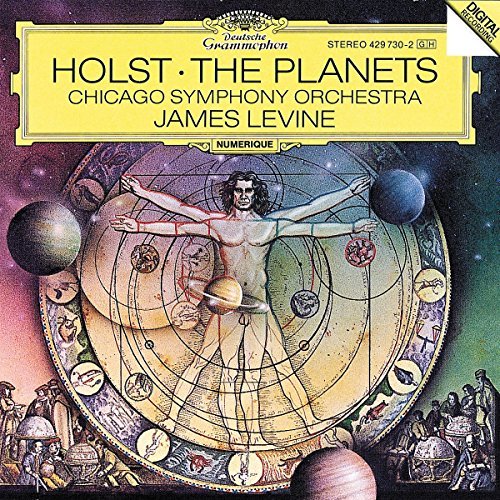
Holst: The Planets
Deutsche Grammophon
Gustav Holst was a British composer who lived from 1874-1934. Although he was a gifted composer, and good friends with the iconic Ralph Vaughan Williams, most of his music failed to gain a broad audience with the exception of the Planets. Holst was fascinated by the mythology behind medieval cosmology, and decided to compose a work which attempted to embody the mythos of each planet. Notably, however, he does this with regard to a modern understanding of the heavens, not using the sun or moon as planets (they were in medieval) and instead adding Neptune and Uranus.
Jupiter, the Bringer of Jollity is one of the most famous of these pieces…
Something I find interesting is that the last two planets (both modern discoveries) have the most mysterious, magical, enchanted names: The Magician and the Mystic.
It’s as if Holst wants to remind us that, if anything, scientific discoveries have opened up new chasms of mystery. The world is not less wondrous for having discovered them but more.In Neptune (The Mystic), he ends with voices to remind us of the song of the spheres. An author at the Global Orchestra writes “Holst intended the voices to be placed off stage in an adjoining room, the door of which was to be left open until the very last bar when the instruments stop and only the voices are heard repeating the final two chords over and over while the door is slowly closed (global orchestra).” For Holst, at the end of all our wandering is not less wonder but more.
More recently, other artists have taken up the task of re-enchanting the heavens as well. I wanted to end today with my favourite song from Sufjan Stevens’ project Planetarium. It’s the Mercury song. As I discussed last week with Dr. Ward, Mercury is my planet. It is the planet of words, scholarship, swiftness, and changeability, all of which describe me rather well I love that Sufjan ends with this planet. The song is addressed to Mercury, and over and over again Sufjan asks “Where do you run to? Where do you run?” I think this is the question he ends with after gazing at the stars. Where does all this beauty, this order, this immensity run toward? In a way, it’s not such a different question from the question of the medievals.
We can’t help but hope the stars will lead us to the true, higher heaven.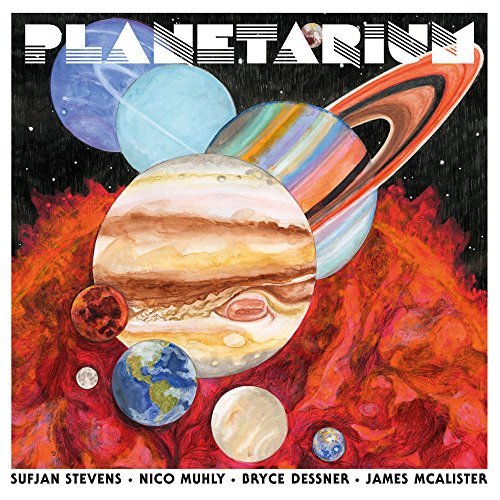
Planetarium
4AD
Your parting assignment…
Go look at images from the Hubble Space Telescope while listening to Gustav Holst's The Planets. Bask in the beauty, the immensity, the mystery. The world is not disenchanted, friends, we've only grown blind to its wonder.
And while you’re at it… a poem by Gerard Manley Hopkins always makes everything better as well…
The Starlight Night
Gerard Manley Hopkins
Look at the stars! look, look up at the skies!
O look at all the fire-folk sitting in the air!
The bright boroughs, the circle-citadels there!
Down in dim woods the diamond delves! the elves'-eyes!
The grey lawns cold where gold, where quickgold lies!
Wind-beat whitebeam! airy abeles set on a flare!
Flake-doves sent floating forth at a farmyard scare!
Ah well! it is all a purchase, all is a prize.
Buy then! bid then! — What? — Prayer, patience, alms, vows.
Look, look: a May-mess, like on orchard boughs!
Look! March-bloom, like on mealed-with-yellow sallows!
These are indeed the barn; withindoors house
The shocks. This piece-bright paling shuts the spouse
Christ home, Christ and his mother and all his hallows.

The Fabric of the Cosmos: Space, Time, and the Texture of Reality
By Brian Greene

The Discarded Image: An Introduction to Medieval and Renaissance Literature (Canto Classics)
By C. S. Lewis

Planet Narnia: The Seven Heavens in the Imagination of C. S. Lewis
By Michael Ward
May 6, 2019
Narnia and the Heavens

Legend has it that when J.R.R. Tolkien first read The Lion the Witch and the Wardrobe, he was not impressed.
It was a bit of a mish-mash of mythological allusions. It had dryads, centaurs, and fauns (members of the Greco-Roman mythological cast) Father Christmas (British), giants and dwarves (Norse), and a dozen other fantastical creatures awkwardly hanging out in the same imagined world. To Tolkien, who laboriously crafted a world of immense and finite coherency, Lewis’ smorgasbord of characters seemed downright careless. Of course, this didn’t stop Tolkien from buying the books as Christmas presents for all his young acquaintances, but one imagines it was not without a raised eyebrow, and a tsk tsk.
Friends don’t let friends write mythologically incoherent children’s novels.
For a long time, this is how most people regarded the Chronicles of Narnia, as the charming, hodge-podge project of a Oxford don too busy to double check which mythological creatures belonged in which story. The books are delightful, well beloved, classics even, but at the end of the day, they are children’s books, without much real literary value. But what if there is a method behind the madness Narnia? What if he didn’t just forget which creatures belonged in which mythologies? What if there is a golden string running through each story, so that they hang together like pearls on a necklace… or like planets in the night sky?
Dr. Michael Ward solved the mystery, and he has two books and a BBC documentary to prove it.
In Planet Narnia, he argues that medieval cosmology, a subject which fascinated Lewis throughout his life, provides the imaginative key to the seven novels. In the Medieval understanding of the cosmos, there were seven heavens (or planets) orbiting around the earth. Each of these planets had characteristics associated with its mythic counterpart— Jupiter is kingly and jolly, Mercury is quick, Saturn brings destruction—and they shed these influences upon people, events, and seasons of the year. This was a very important part of the medieval imagination, and Dr. Ward argues that each book in the Chronicles of Narnia is themed around one of these seven heavens. Although I’m naturally suspicious of anyone claiming to have made such a momentous discovery after all these years, as I read, I could not help but be convinced by Dr. Ward’s thorough, loving, and scholarly treatment of the books.
Understanding The Chronicles of Narnia through the lens of the Medieval Cosmology gave me a deeper respect for the series as a worthy masterpiece, and for Lewis as a masterful author.Curious about what all of this means? Well, I guess you’ll just have to give it a listen…

Dr. Michael Ward
Michael Ward is Senior Research Fellow at Blackfriars Hall, University of Oxford. He is the author of the award-winning Planet Narnia: The Seven Heavens in the Imagination of C.S. Lewis (Oxford University Press) and co-editor of The Cambridge Companion to C.S. Lewis (Cambridge University Press). Though based at Blackfriars in Oxford, Dr Ward is also employed as Professor of Apologetics at Houston Baptist University, Texas, teaching one course per semester as part of the online MA program in Christian Apologetics.
On the fiftieth anniversary of Lewis's death (22 November 2013), Professor Ward unveiled a permanent national memorial to him in Poets' Corner, Westminster Abbey. He is the co-editor of a volume of commemorative essays marking the anniversary, entitled C.S. Lewis at Poets' Corner (2016).
Michael Ward presented the BBC1 television documentary, The Narnia Code (2009), directed and produced by the BAFTA-winning film-maker, Norman Stone. He authored an accompanying book entitled The Narnia Code: C.S. Lewis and the Secret of the Seven Heavens (Tyndale House, USA / Paternoster, UK).
Dr Ward served as Chaplain of St Peter's College in the University of Oxford from 2009 to 2012 and as Chaplain of Peterhouse in the University of Cambridge between 2004 and 2007. He was resident Warden of The Kilns, Lewis's Oxford home, from 1996 to 1999. He studied English at Oxford, Theology at Cambridge, and has a PhD in Divinity from St Andrews.
Dr Ward's chief claim to fame, however, is that he handed a pair of X-ray spectacles to James Bond in the movie The World Is Not Enough. Here he is next to 007 and Q:…
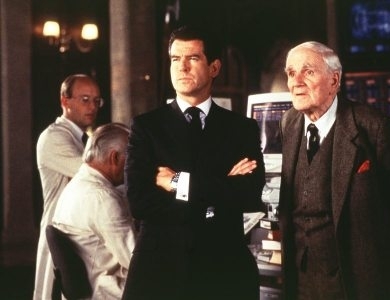

In addition to being a world renowed Lewis scholar, Dr. Ward is also a dear family friend...
Here were are at Thanksgiving, accidentally matching in our festive maroon velvet. Aren’t we fetching? We recorded this podcast after generous helpings of shepherd’s pie and sundaes. It’s amazing we didn’t fall asleep from the feast!
listen! I cannot emphasise this enough: buy Dr. Ward’s book.
The Narnia Code: C. S. Lewis and the Secret of the Seven Heavens
By Michael Ward
it’s a fun read and it will blow your mind.
It will also give you insight into Chronicles of Narnia, Lewis’ own literary imagination, and into medieval cosmology… the most interesting thing you never knew you needed to know about! For the more academic amongst you, let me commend the longer version… Planet Narnia…

Planet Narnia: The Seven Heavens in the Imagination of C. S. Lewis
By Michael Ward

Oh, and one more thing…
if you enjoyed Dr. Ward’s perfect English accent in today’s episode, you’ll love this week’s Patreon reward… a poetry reading by Dr Ward himself!If you’ve thought about joining the Patreon, this is a good month to give it a go. You can find this week’s rewards and more information at the button below…
Secret Podcast — Michael Ward Poetry Reading
April 25, 2019
...

Speaking with Joy is taking a tea break.
Don’t worry. I won’t be away too long— I’ll be back on May 7th. After the merry madness of Easter, and a wonderful time with my family, my unanswered emails have grown desperate, and my to-do list is beginning to look rather austere. So, I’ve decided to take a few weeks off to record some new episodes, answer my emails, and maybe actually write my phd. I’ll miss you all.
In the meantime, perhaps you will enjoy catching up on the last few episodes…
Tend Your Garden with Kristyn Emmer
In this episode, I talk with Kristyn Emmer about how our bodies and souls are more like gardens than cars. We don’t need tune ups, we need gentle, consistent cultivation.
Listen to this one if you’re feeling bone weary and in need of a pick me up!
Wrestling with God Through Art
When we doubt and suffer, it is easy to turn our faces away from God, but perhaps it is better to bring all our powerful emotions to God— doubt, rage, and sadness. In this episode we discuss the lives of three artists who wrestled with God through their art.
Listen to this one if you have big questions and an achey heart.
You Did Not Speak Steadfastly to Me
What in the world is going on in the book of Job? In this episode, I talk with my friend Tobias Siegenthaler about the beauty and depth of Job that we can so easily miss. With his skill and studies, he opens new understandings about this enigmatic book.
Listen to this episode if you like Biblical Criticism, Poetry, and Poetic Theodicies.
Jesus Blood Never Failed Me Yet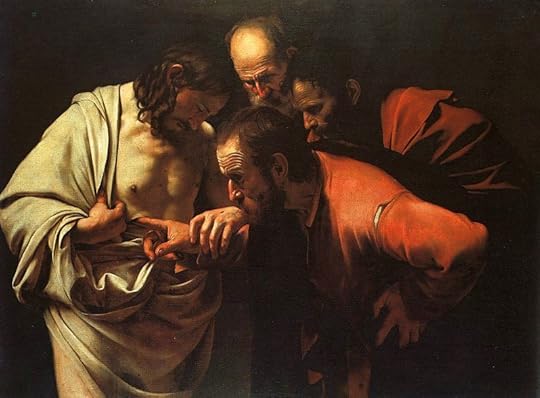
We live in a world where we hardly ever have to come in contact with blood, and if we do it’s a sign that something has gone very, very wrong. But blood is also the stuff of life. On the last night of his earthly life, Jesus said “This is my blood poured out for you and for many for the forgiveness of sin.” In this episode, we explore the mystery of Christ’s blood through three works of art.
Listen to this episode if you love Jesus and/or are sad Lent is over.
Patreon updates: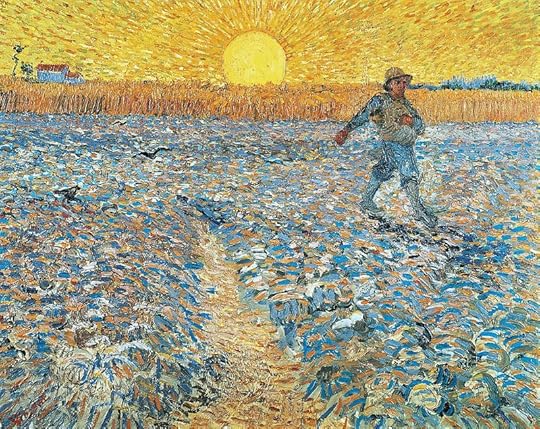
I’ll still be updating my patreon. And just so you know, I recently posted this month’s installment of the Joynal which is my monthly letter where I ramble about everything that is happening in my life, what I’m learning, and what I’m finding beautiful. That’s a part of my $2 monthly pledge ranking, and I’ll also be posting some secret podcasts on the $10 monthly pledge section soon as well. Patreon is a way for people to support the podcast and keep me afloat while I do my Phd. You can find out more about it here.
Much love, friends!
Wishing you well.
Joy
April 16, 2019
Jesus' Blood Never Failed Me Yet
One summer evening in high school, my friend tripped, smashed her head on the side walk, and slid on the gravel.
I remember being surprised by how bright the blood was as it poured out of her forehead with that gushing excess so typical of head wounds. For whatever reason, I’ve never been particularly squeamish when it comes to blood, so I held cloth to the wound and tried to comfort her while our other friend picked bits of gravel out of her forehead. In that moment, I realised that I'm not very accustomed to the sight of blood.
Here in the west, we never need to see blood, or anything very bodily for that matter. And if we do, it’s usually a sign that something has gone terribly wrong. Blood is the sign of violence, of accident, of grave illness. But blood does not only indicate death. My sister was at my mother’s bedside when I was born. I’m told there was a great deal of blood, and of other things. But this was life blood, the pouring out of one human for the life of another. Every human being comes into the world this way, in a rush of blood and water.
Blood is the stuff of death, but it is more fundamentally the stuff of life.
I wonder sometimes if our total blindness to blood and bodies has sometimes made it difficult for us to comprehend and embrace the beautiful, radical word of Jesus, describing the power of his death.
This is my blood of the new covenant, poured out for you and for many for the forgiveness of sins.
— Matthew 26:28
In one of the earliest Christian manuscripts called the Octavius Dialogues (197 C.E.), a pagan philosopher accuses Christians of being cannibals. “At your meetings you eat children!” says the aghast Caecilius Natalis says to his friend Octavius Januarius. Octavius’s response is hardly comforting “Oh no! We do not eat the bodies of our children, we eat the body of Christ our Lord.”
At heart of the Gospel is this strange and wonderful reality: Christ’s blood poured out for us on the cross. This image may seem distant and strange to us in our cynical, modern world. And so this week, I wanted to dwell upon it, explore it in scripture, and see it through the eyes of artists.
It feels fitting to dwell on the blood of Christ as we draw close to the final days of Holy Week, in which we remember Christ’s death and celebrate his resurrection. I hope listening to this podcast will encourage you as much as preparing it encouraged me.
listen in at the link above and follow along in the show notes belowVisual — The Incredulity of Saint Thomas by CaravaggioAt the heart of the gospel are events: the incarnation, the crucifixion, the resurrection. These events were not mere intellectual realisations, or moments of spiritual enlightenment, but things that happened in the course of history. It involved earth, time, and blood.
The Incredulity of Saint Thomas by Carravaggio, 1602.
John 20…
Now Thomas, one of the twelve, called the Twin, was not with them when Jesus came. So the other disciples told him, “We have seen the Lord.” But he said to them, “Unless I see in his hands the mark of the nails, and place my finger into the mark of the nails, and place my hand into his side, I will never believe.”
Eight days later, his disciples were inside again, and Thomas was with them. Although the doors were locked, Jesus came and stood among them and said, “Peace be with you.” Then he said to Thomas, “Put your finger here, and see my hands; and put out your hand, and place it in my side. Do not disbelieve, but believe.” Thomas answered him, “My Lord and my God!” Jesus said to him, “Have you believed because you have seen me? Blessed are those who have not seen and yet have believed.”
Now Jesus did many other signs in the presence of the disciples, which are not written in this book; 31 but these are written so that you may believe that Jesus is the Christ, the Son of God, and that by believing you may have life in his name.
What does this mean for us? That what is offered to us in Jesus is not merely a doctrine to believe, but an event to believe in. Something which has happened or not. Something which has changed everything.
About the artist…
Michelangelo Merisi da Carravagio
Italy, 1571-1610.
Carravagio is one of the most well known painters of history. His paintings are striking, vivid, and realis tic. His subjects are almost never posed, and are almost always in the midst of movement, struggle, or tension. He used a technique called Tenebrism, which plays with dramatic uses of light and shadow to highlight the important parts of the painting.
2. Literary — Dream of the Rood
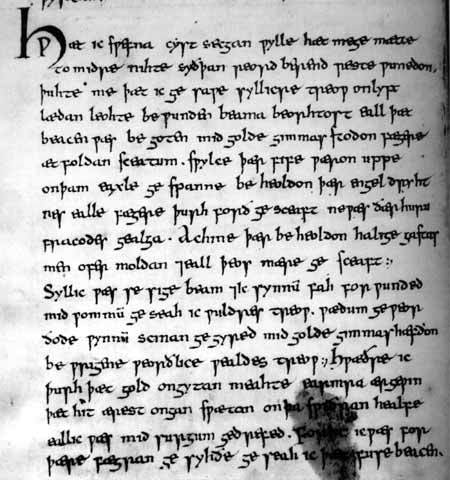
medieval manuscript of Dream of the Rood
Wondrous was the victory-tree, and I stained with sins,
wounded with guilts. I saw the tree of glory,
— Dream of the Rood, lines 13-14
Most likely composed in the eighth century, The Dream of the Rood is an Old English poem describing a vision in which the Cross (the Rood) comes to life and remembers the night of the crucifixion. It is an excellent example of the transition from Celtic Paganism to Christianity, as the poet gazes on Christ the Hero who, unlike the Pagan Gods, allows himself to be defeated for the sake of humankind. Throughout the text, the poet juxtaposes the way that he is "sin soaked” with the way the cross is “blood soaked.” The cross comes to represent the absorption of his sins through Christ’s sacrifice, and Christ’s triumph over death through his resurrection.

Ruthwell Cross, 8th century.
You can listen to it in its original old English on the video below (I highly recommend giving it a listen!)
And you can read the Modern English translation here…
Dream of the Rood — Modern English Translation
3. Musical — Jesus’ Blood Never Failed Me Yet by Gavin BryarsWhat does the blood of Christ accomplish?
In the 15th century (around the time of the Reformation) many people were questioning just what the nature of Jesus’ sacrifice was. So they made up a word “Atonement,” or more literally “at-one-ment.” With this word theologians began to ask “How did Jesus’ death make us at-one-with God?” And ever since, many theories have been proposed. To name a few…
Theories of Atonement:
Christus Victor:
Satisfaction
Penal Substitution
Sacrificial
Ransom Theory
Moral Exemplar
What does scripture say about the blood of Christ?Bought us (Acts 20:28, 1 Peter 1:18-19)
Reconcile all things to Christ (Colossians 1:20)
Redemption and forgiveness (also debt language Ephesians 1:7)
Cleanses our conscience (Hebrews 9:14, Hebrews 9:22)
Purifies (1 John 1:7)
Makes a way for us into the Most Holy Place (Hebrews 10:19)
Makes atonement (Leviticus 17:11, Romans 3:24-25)
Frees us from sin (Revelation 1:5)
Washes us (Revelation 7:14)
Triumphed (Revelation 12:11)
Justified (Romans 5:9)
It seems that each theory of atonement is represented in scripture. Christ’s blood does all these things and more. We are not expected to have a perfect theological understanding of what Christ accomplished, but rather to rest completely in its fullness and sufficiency.
we do not need a perfect theological understanding of what was accomplished through Christ, but a perfect trust in its saving power.One of the most beautiful examples of this simple confession of trust in the blood of Jesus can be found in Gavin Bryar’s “Jesus Blood Never Failed Me Yet.” Bryars wrote the piece to honor the simple song of a homeless man. He describes the history behind the song in the following passage:
“In 1971, when I lived in London, I was working with a friend, Alan Power, on a film about people living rough in the area around Elephant and Castle and Waterloo Station. In the course of being filmed, some people broke into drunken song – sometimes bits of opera, sometimes sentimental ballads – and one, who in fact did not drink, sang a religious song "Jesus' Blood Never Failed Me Yet". This was not ultimately used in the film and I was given all the unused sections of tape, including this one.
When I played it at home, I found that his singing was in tune with my piano, and I improvised a simple accompaniment. I noticed, too, that the first section of the song – 13 bars in length – formed an effective loop which repeated in a slightly unpredictable way [in the notes for the 1993 recording on Point, Bryars wrote that while the singer's pitch was quite accurate, his sense of tempo was irregular]. I took the tape loop to Leicester, where I was working in the Fine Art Department, and copied the loop onto a continuous reel of tape, thinking about perhaps adding an orchestrated accompaniment to this. The door of the recording room opened on to one of the large painting studios and I left the tape copying, with the door open, while I went to have a cup of coffee. When I came back I found the normally lively room unnaturally subdued. People were moving about much more slowly than usual and a few were sitting alone, quietly weeping.
I was puzzled until I realised that the tape was still playing and that they had been overcome by the old man's singing. This convinced me of the emotional power of the music and of the possibilities offered by adding a simple, though gradually evolving, orchestral accompaniment that respected the homeless man's nobility and simple faith. Although he died before he could hear what I had done with his singing, the piece remains as an eloquent, but understated testimony to his spirit and optimism."[3]
you can listen to the song here…For me personally, this song is an embodiment of how God hears our simple confessions of faith, how he uplifts them with grace and makes them sufficient, beautiful, even glorious.
This is the attitude I want to bring with me into Holy Week. Not trying to generate holy emotions, or believe hard enough to justify myself, but to rest fully into the blood that has never failed me yet. And I pray the same for you.
Further Reading…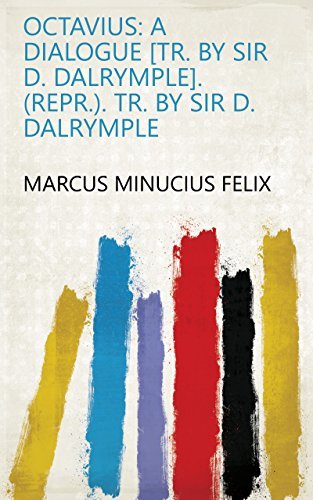
Octavius: a dialogue [tr. by sir D. Dalrymple]. (Repr.). Tr. by sir D. Dalrymple
By Marcus Minucius Felix
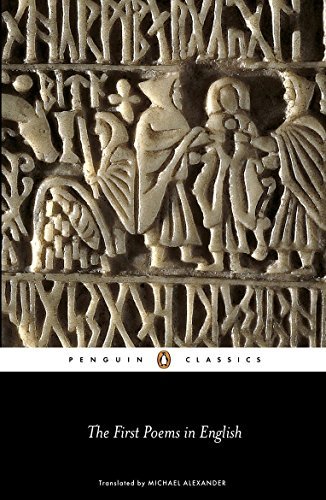
The First Poems in English (Penguin Classics)
By Anonymous
this volume contains Dream of the Rood.
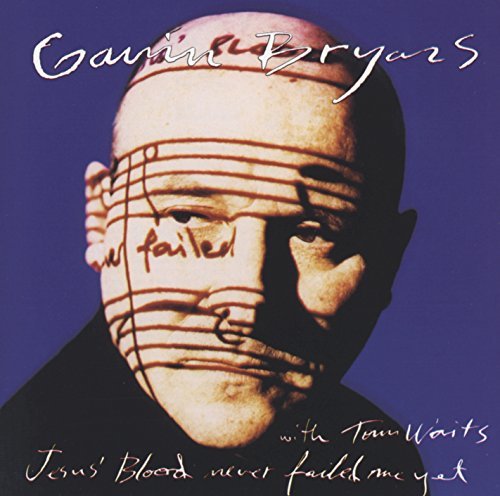
Bryars: Jesus' Blood Never Failed Me Yet
Decca
A reminder to my Patreon supporters…
I recently posted a Lenten podcast with Boze Herrington, and tomorrow I will be posting a Holy Week playlist with a guide for the lyrics and some scriptures for you to meditate on. Make sure to head over there and check it out. I hope it is a gift to you this Holy Week.
Speaking with Joy Patreon
April 9, 2019
You Did Not Speak Steadfastly to Me...
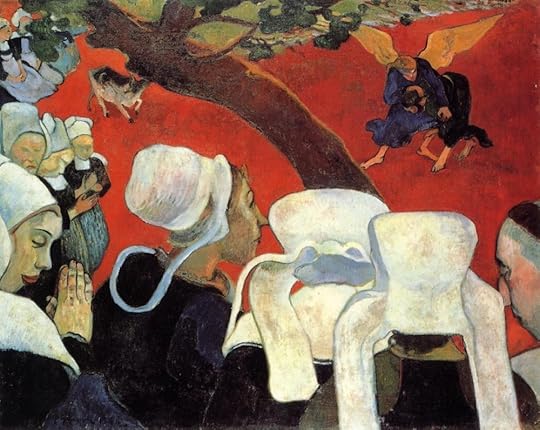
Vision of the Sermon (Jacob Wrestling with the Angel), Paul Gauguin, 1888.
You did not speak steadfastly to me.
— God to Job's Friends (Job 42:7)
These are the words of rebuke that God speaks to Job's friends. This is not a rebuke of incorrect doctrines but of an indifferent attitude toward relationship.
It is easy for theologians to speak about God, without ever speaking to God.Last week, we explored the importance of struggling with God, of not turning away when we are in the midst of suffering or doubt but bringing those powerful emotions to God. This week, I have the great pleasure of sharing the insights of my friend Tobias Siegenthaler on the book of Job. As I mentioned last week, Tobias and I had an auspicious first meeting in which dived straight into a theological conversation about the problem of evil in the book of Job. Since then, I have come to know Tobias as a deep, joyful soul who is generous to his core and deeply devoted to Jesus. He is currently pursuing a Phd in Biblical Studies at Saint Andrews University. I would say that Tobias is a gifted speaker, but I think it is more accurate to say he is an excellent preacher. He speaks not merely to inform but to awaken. He preaches, as he studies, in a way that does not merely offers the wisdom of scripture, but opens it as a living and active thing, leading us closer in relationship to God. He has an ability to, as Eugene Peterson would put it, make the words of scripture sing.
Tobias certainly made Job sing for me, and I hope this episode will do the same for you!

The man himself in his homeland Switzerland. This photo was taken by Kristyn who was on the podcast a few weeks ago. Small world. And I’m blessed with wonderful, interesting friends!
Never miss a pondering!
If you enjoyed this podcast, sign up to get weekly updates!
Email Address
Sign Up
We respect your privacy.
Thank you!
Oh, and about the painting…
In last week’s episode, I talked about struggling with God and of course, that most famous God-wrestler came up: Jacob (Genesis 32:22-32)! Tobias sent me this wonderful painting by Gauguin, who, by the way is the one Van Gogh sent his severed ear to! It is called “Vision of the Sermon (Jacob Wrestling with the Angel).” I love how it juxtaposes the pious, contained church goers with the desperate, physical struggle playing out in front of them.
Would you rather be the witness or the wrestler?
I may end up with a lame leg, but I’d rather be in the ring.
National Gallery — The Vision of the Sermon
It takes a village to make a podcast…
I owe several people thanks this week. Tobias, of course, for coming on the show. And I would be remiss if I didn’t thank my amazing sound editor for salvaging the audio on this episode. I brought my mic to Tobias’ house but it decided not to work. But my sound editor took out some of the background sound and made it listenable. I am also deeply thankful for the Anselm Society who sponsor me, have bought me new equipment, and set me up with sound editing to begin with. You all are amazing. And finally, to my generous patrons on Patreon who make it possible for me to continue producing the podcast while doing my Phd. I quite literally couldn’t do it without you all.
So, yes. It takes a village to make a podcast! And what a lovely village it is.
Did you enjoy this episode? Share it with someone!
April 2, 2019
Wrestling with God Through Art

My anger burns against you and against your two friends, for you have not spoken to me what is right, as my servant Job has...
— Job 42:7
One fateful evening, when feeling shy at a party, I did what any sensible person feeling bashful might do, and found someone to have an intense, theological conversation with. His name is Tobias, and we are now good friends, but that evening all we knew was that I studied the affective capacities of art and he studied biblical literature. So after exchanging names and elevator pitch pleasantries, we dived right into the problem of evil: how could a good God allow evil?
He had written a project on Job, a book which has stymied theologians, literary scholars, and laymen alike. Why did God allow the devil to have his way with Job? Why did God prefer Job to his self-righteous but apparently well meaning friends? Is this really meant to be a useful answer to the problem of evil?
Tobias reframed the problem of Job for me. He said that he thinks that the author of Job doesn’t want, as John Milton would later write “to justify the ways of God to men,” but to reorient them around this problem. It gives us a new way to approach and experience suffering. And this is made clear in God’s rebuke of Job’s friends. Job says a lot of outrageous things that we would not ordinarily endorse as orthodox theology. But the difference between Job and his friends is that Job addresses his quandaries and complaints and fits of rage at God, while his companions only whisper and murmur and proclaim about God. Tobias showed me the verse quoted above, and said that the word our Bibles usually translate as “about” should be translated as “to.” So God does not say “you have spoken wrongly about me” but “you have spoken wrongly to me.” Or, in other words: you haven’t spoken to me at all.
When God rebukes Job’s friends, it is not because they were theologically incorrect, but because they were relationally insensitive. They ignored God as they spoke of him.
The difference between Job and his friends was not theological but personal: Job raged, wept, and prayed to God while his friends spoke about God. Even in our darkest moments, God invites us into relationship. This week, we look at the lives of three artists who struggled well with God.
listen along at the link above, and then follow along in the notes below. Visual: “Wheatfield with Crows” by Vincent Van Gogh
Vincent van Gogh (1853-1890) was a sensitive man.
Sensitive to the beauty and glory of the world, but also to its great brokenness. This sensitivity manifested itself in a life long struggle with what we would now identify as mental illness, going through periods of extreme productivity and happiness, and deep, destructive despair. You can see this battle in his art, which dazzles its viewer with wonder and beauty, while an element of threat and darkness looms in the corners.
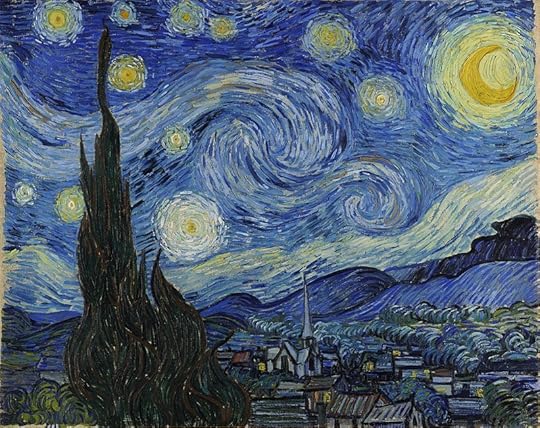
Starry Night, 1889
So I set fire to starlight to burn up against the despair. I was caught in the tangles of midnight, of long unanswered prayers
— Matthew Perryman Jones, Oh Theo
One of Van Gogh’s most prolific periods was during and shortly following his stay at the mental Asylum the Saint-Rémy (May 1889 – May 1890). Accompanied by his companion, a Protestant clergyman, Van Gogh found a semblance of stability and artistic fecundity, shortly prior to his death.

The Sower, after Milley 1888.

Dear Theo…
Throughout his short and tumultuous life, Vincent kept up a constant correspondence with his brother Theo. Theo was his lifelong supporter, financially, spiritually and relationally. Most of what we know about Van Gogh’s life we know because Theo kept all of Vincent’s letters. The letters are deeply personal, almost like a diary, and they often incorporated paintings or sketches. After Theo and Vincent died, Theo’s wife Johanna published some of the letters.
Something I find interesting is that even as all these letters are addressed to Theo (his brother), each letter is addressed to “Theo” which literally means “God.” There is, then, an element of prayer in these letters. As he poured out his heart to his earthly brother, did his heavenly father listen in as well?
you can read all of the letters between theo and vincent at this link.
This song is about the letters between Theo and Vincent, and it beautifully explores the ways that Van Gogh struggled well in his art.
2. Literary: The Terrible Sonnets by Gerard Manley Hopkins

In the Terrible Sonnets, Gerard Manley Hopkins found that in wrestling with despair, he wrestled with God.
Gerard Manley Hopkins (1844-1889) was also a sensitive soul.-Educated at Balliol College in Oxford University, he converted to Roman Catholicism under John Henry Newman. After entering the Society of Jesus as a priest, he burned his writings and did not writing any poetry for several years. Eventually, a spiritual director convinced him that poetry could be his gift to give the world and with which he could glorify God. which shares a Romantic emphasis on the goodness of creation, rejecting the evils of the industrial revolution. Close to the end of his life, he struggled with isolation when he moved to take a teaching position at Trinity College in Dublin, and alienation from his family due to his Catholicism, In this period he wrote a collection of poems now known as the “Terrible Sonnets’ in which he wrestled with feelings of doubt and despair. They were not published till after his death.
Carrion ComfortNot, I'll not, carrion comfort, Despair, not feast on thee;
Not untwist — slack they may be — these last strands of man
In me ór, most weary, cry I can no more. I can;
Can something, hope, wish day come, not choose not to be.
But ah, but O thou terrible, why wouldst thou rude on me
Thy wring-world right foot rock? lay a lionlimb against me? scan
With darksome devouring eyes my bruisèd bones? and fan,
O in turns of tempest, me heaped there; me frantic to avoid thee and flee?
Why? That my chaff might fly; my grain lie, sheer and clear.
Nay in all that toil, that coil, since (seems) I kissed the rod,
Hand rather, my heart lo! lapped strength, stole joy, would laugh, chéer.
Cheer whom though? the hero whose heaven-handling flung me, fóot tród
Me? or me that fought him? O which one? is it each one? That night, that year
Of now done darkness I wretch lay wrestling with (my God!) my God.

In his Stabat Mater, Antonín Dvořák mourned the death of his children with Mary at the foot of the cross, asking that his sorrow, like hers, be turned to hope by the resurrection.
Dvorak (1841-1904) is arguably one of the most versatile composers of his time. After a halting start to his career in Europe, where he was discriminated against due to his Czech heritage, he moved to America where he composed his famous “New World Symphony.” (pss. we’ve discussed this piece in a previous episode which you can listen to here). His work is mainly concerned with two themes: a love of home and his deeply held faith.
The composition that catapulted him into fame was his Stabat Mater, which he wrote in response to the death of his three living children. The Stabat Mater Dolorosa (The sorrowing mother stands weeping) is a 12th century Marian hymn which has been set to music by many composers. It stands with Mary at the foot of the cross, hoping to find consolation and hope in Christ’s death and resurrection. You can read the full text in Latin and English here.
When we rage, suffer, doubt at God, rather than about him, we allow space for his response, we make room, even if it is very small, for hope to creep in.
For I consider that the sufferings of this present time are not worthy to be compared with the glory that is to be revealed to us. For the anxious longing of the creation waits eagerly for the revealing of the sons of God. For the creation was subjected to futility, not willingly, but because of Him who subjected it, in hope that the creation itself also will be set free from its slavery to corruption into the freedom of the glory of the children of God. For we know that the whole creation groans and suffers the pains of childbirth together until now. And not only this, but also we ourselves, having the first fruits of the Spirit, even we ourselves groan within ourselves, waiting eagerly for our adoption as sons, the redemption of our body. For in hope we have been saved, but hope that is seen is not hope; for who hopes for what he already sees? But if we hope for what we do not see, with perseverance we wait eagerly for it.
Did you enjoy this episode? Leave a comment and share it with a friend!March 25, 2019
Tending Your Garden — featuring Kristyn Emmer

On today's episode, Joy chats with Kristyn Emmer, who shares her insights on cultivating wellness of body, soul, and heart. We are more like gardens than machines.
But more often than not, we treat our health, our bodies, and our overall wellness like we are cars to tune up, motherboards that need tweaking. We treat doctors like mechanics. But what if what we needed was not an oil change, but the gentle cultivation of a gardener? Is there a better way to approach wellness?

Kristyn and I walked through a proper downpour to reocrd this episode.
My friend Kristyn is like a living beam of sun. She is bright, fierce, warm, and life giving. When Kristyn walks into a room, a new centre of gravity arrives, people’s faces light up, and laughter abounds. God brought Kristyn into my life just when I needed her. After a sparkling year, full of adventure, freedom, and friends, Kristyn found me a cloudy mood. All my friends from the previous year had moved away, and I was floundering in the oppressive freedom of my Phd. Connected by a mutual friend from Colorado, Kristyn and I got coffee. From that first and fateful foamed beverage, we got on like a house on fire. She fixed her eyes on me with an amiable intensity “Aren’t you tired of shallow friendships? Of groups and lunches where no one talks about what’s really happening in the lives or hearts? I think we should start a group to dive deep. That’s what I need.”
And so we did.
Kristyn has a keen mind and a clear eye. She calls people to their fullest, most fruitful selves.I can attest to this. The group Kristyn started and ran was a lifeline for me— a place that held me, prayed for me, and helped me grow. The kind of group I hope Girls’ Club could inspire. But I’ve seen this proclivity come into even greater fullness as Kristyn has studied to become a functional medicine wellness coach. In addition to the spiritual and emotional tools she already has, she has added a knowledge of what our bodies need to grow and flourish. Her dream is to help people live holistically healthy lives, which takes into account our spiritual, social, and physical needs. So, today, I picked Kristyn’s brain on some of the things she has learned.
Today on the podcast, Kristyn and I talk about simple ways we can move towards wellness of body, soul, and heart. I hope it will encourage you to tend to the garden of your soul.
Most conversations about health and wellness leave me feeling guilty or overwhelmed.
But that’s what I love about Kristyn— she gives me wise ways forward, baby steps. We may not be able to suddenly buy all organic foods, cut out sugar, and sleep 9 hours each night, but we can do one kind thing for our bodies or souls today. And perhaps that one kind thing will become a habit. I wanted to share this conversation with you because it helped me feel empowered to take action for my health and wellness.

to grow in wellness, we must stop thinking of ourselves less like cars to tweak and more like gardens to nurture.
Kristyn suggests that there are five areas that will largely determine our wellness:
Nourishment— what you put in your body
Movement— what you do with your body
Stress—how you deal with internal and external sources of strain
Relationships— the way your networks drain, train, and shape you
Sleep— the way you reset your body
let me introduce you to my friend, Kristyn Emmer…
Kristyn has the spirit of an adventurer and the heart of a homebody. Originally from Wisconsin, she learned the gift of community, simple living, and consistency balanced with lake adventures, wonder-filled camping trips, and the possibility that an open field can bring. To this day, she seeks to find and create this wherever she goes. Kristyn is currently training as a Functional Medicine wellness coach, in awe over the interconnectedness of not just our minds, bodies, and spirits, it our connection we have to the people and the planet around us. And in all of her other time, she's hanging out with university students, taking photos, practicing her best Scottish accent, or gallivanting around Europe with her husband, Seth.
Did you enjoy this podcast? Find out more about Wellfolk & Co…Kristyn and her husband Seth are on a mission. They want to call people to wholeness in their spiritual, social, and physical lives. They’re just beginning this process, but you can follow along and find out more by following the Wellfolk & Co on instagram. I can’t wait to see how they develop this vision further!


For more resources, check out my Patreon…
Kristyn put together a wonderful Wellness Worksheet, which helps you think through how you might make small but significant changes in each area we talked about on the podcast. I really enjoyed thinking through it for myself, and I hope it will be helpful to you!
Wondering what Patreon is? Long story short... last year, I nearly burned out. I was trying to do too much: write a Phd, produce a podcast, and support myself financially. I knew at least one of these had to go if I was going to stay sane. After some prayer, I decided to launch a Patreon to ask faithful listeners to support me as I produce Speaking with Joy and finish my Phd. It was really a step of faith, but God surprised me, so have you all.
So, Patreons support me either $10 or $2 a month, and as a thank you, I post supplementary content related to the podcast. It is a way for you to get more out of the podcast, and for me to stay afloat in this strange season of doctoral research. It's not exactly a membership, so some months I may have less content. I'm trusting in your goodwill not to treat this merely as a consumeristic platform, but under the expectation that you all are really keeping me afloat as I study and produce the podcast.
Join Joy's Patreon!
Blessings, friends! See you next week!
March 18, 2019
We're All Romantics!

Wanderer Above Sea Fog, Caspar David Friedrich
What if I told you were were all romantics?
I don’t mean that we all like grand romantic gestures, chocolates, roses and romcoms, but rather that we are all fundamentally impacted by a historic movement that shapes the art, industry, and psychology of our present day. In his excellent book Poetic Theology, William Dyrness writes “Romanticism developed a discourse and a register of feeling that has come to define the modern self.” If Dyrness is right, and Romanticism shapes how we live and think in the modern world, then it is important to understand what this enigmatic movement is all about.
So this week, I will give a brief introduction to Romanticism through the art, literature, and music created in the height of its existence. I hope that in doing so, we will gain a deeper understanding of ourselves and our world, and perhaps correct some of the more deleterious aspects of this powerful movement.
So, join me!
Listen to the podcast at the following link, and then follow along in the notes below…. What is Romanticism?Romanticism was a literary, artistic, and intellectual tradition responding to the rapidly changing cultural scene of the late 18th and early 19th century. In a world increasingly ruled by strident rationalism and industrialism, the Romantics sought to reclaim the value of beauty, nature, and imagination. Charles Taylor writes…
... a rebellion against the construction of neoclassical norms in art and especially literature. Against the classical stress on rationalism, tradition and formal harmony, the Romantics affirmed the rights of the individual of the imaginative, and of feeling.
— Charles Taylor, Sources of the Self
Specifically, Romanticism was responding to these historic changes…The Industrial Revolution (1820-1845):
Around this time, a huge boon in mechanical inventions changed the face of production and transportation. In 1825, the Stockton and Darlington Railway first began operations. What quickly followed was a landscape changed by railroads and industry. Textiles (like cotton) which used to be spun in homes by lifelong spinners grew exponentially when the work could be done on machines, one wikipedia article notes: “In 1781 cotton spun amounted to 5.1 million pounds, which increased to 56 million pounds by 1800.” This caused a huge exodus from agrarian lifestyles, and a huge influx of suburband workers, along with unprecedented pollution and poverty.
Emphasis on Rationalism (1600-1800):Rationalism is the view that reason is the chief source of our ability to know. Important figures in the development of rationalism, particularly enlightenment rationalism, are Reneé Descartes (1596-1650) who famously said “I think therefore I am”, Baruch Spinoza (1632-1677), Gottfried Leibniz (1646-1716), and Immanuel Kant 1724-1804). Romantics felt increasingly frustrated with the haughtiness and self-assurance of the Enlightenment rationalists. They thought of intuition, imagination, and desire as more inclusive and expansive human capacities for understanding human existence.
Neoclassicism (1760-1850-ish):Neoclassicism is basically the artistic expression of an emphasis on rationalism (though it can differ within and without religious circles). This artistic movement emphasized order, reason, and proportionality. It also harkened back to classical subjects (i.e. Roman and Greek stories) because that was seen as the height of secular reasoning… thanks Plato!
This video is a great little summary of the ethos behind romanticism…Literary — William Wordsworth A Different Kind of Salvation…
In his excellent book Poetic Theology (2011), William Dyrness writes that the Romantics were trying to recover a sense of the beautiful and transcendent that had been lost in both the Reformation and the Enlightenment. In a desire to cut off what was perceived as the idolatry of the gaudy medieval churches, the baby was thrown out with the aesthetic bathwater, and churches were whitewashed, stained glass crushed, and only monosyllabic hymns allowed to be sung. On the other hand, the more secular force of the enlightenment threw out the rich theology of desire and what desire could teach us, instead insisting on a intellect only approach. Dyrness writes that the Romantics weren’t trying to invent something new, but to recover what was lost. He writes…
Romanticism developed a discourse and a register of feeling that has come to define the modern self. But I don’t want to suggest that what these writers and poets were saying was altogether new. In an important sense, Romantic authors were simply retrieving (and elaborating) a tradition of feeling and associated practices that were indebted to the German Pietists, and beyond these, to the medieval mystics.
— William Dyrnesss, Poetic Theology
And so they tried to recover the emotional register of the pietists (think Bach!) and medieval mystics except one problem: they, for the most part, rejected religion. So they attempted to recover the emotions while rejecting the beliefs, which ended up with an odd kind of pseudo-religion that looks something like this…
God = Nature
Cross = Death
Union with God = Union with Nature
Desire for Union with God = Desire for harmony with Nature
Recognition of the Image of God within and Reconciliation with God Through Christ = Recognition of the “Natural” man which must be unearthed and released through reconciliation with nature and beauty

Lines Written in Early Spring
William Wordsworth
I heard a thousand blended notes,While in a grove I sate reclined,
In that sweet mood when pleasant thoughts
Bring sad thoughts to the mind.
To her fair works did nature link
The human soul that through me ran;
And much it grieved my heart to think
What man has made of man.
Through primrose tufts, in that sweet bower,
The periwinkle trailed its wreaths;
And ‘tis my faith that every flower
Enjoys the air it breathes.
The birds around me hopped and played:
Their thoughts I cannot measure,
But the least motion which they made,
It seemed a thrill of pleasure.
The budding twigs spread out their fan,
To catch the breezy air;
And I must think, do all I can,
That there was pleasure there.
If this belief from heaven be sent,
If such be Nature’s holy plan,
Have I not reason to lament
What man has made of man?Just for giggles and grins (even though it’s not in the podcast…) I love this poem as well…
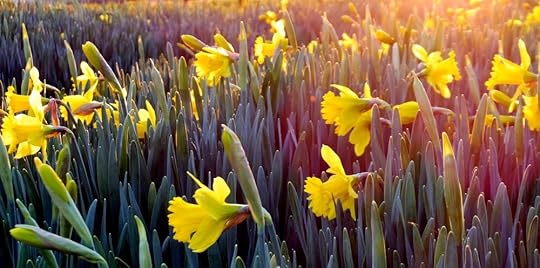
I Wandered Lonely as a Cloud
William Wordsworth
I wandered lonely as a cloud
That floats on high o'er vales and hills,
When all at once I saw a crowd,
A host, of golden daffodils;
Beside the lake, beneath the trees,
Fluttering and dancing in the breeze.
Continuous as the stars that shine
And twinkle on the milky way,
They stretched in never-ending line
Along the margin of a bay:
Ten thousand saw I at a glance,
Tossing their heads in sprightly dance.
The waves beside them danced; but they
Out-did the sparkling waves in glee:
A poet could not but be gay,
In such a jocund company:
I gazed—and gazed—but little thought
What wealth the show to me had brought:
For oft, when on my couch I lie
In vacant or in pensive mood,
They flash upon that inward eye
Which is the bliss of solitude;
And then my heart with pleasure fills,
And dances with the daffodils.

Beethoven…
Beethoven is considered by many to be a proto-Romantic when it comes to music. With the tragic story of his blindness, and his almost miraculous persistence, his life embodied the ideal of the artist who gives himself to his work and triumphs. It should be noted that “Ode to Joy,” one of his most famous pieces emerging from this period was written by one of the philosophic fathers of Romanticism: Friedrich Schiller (1759-1805).
If you want an inside peak into the ideas behind Romanticism, read Schiller’s Letters Upon the Aesthetic Education of Man (1794).
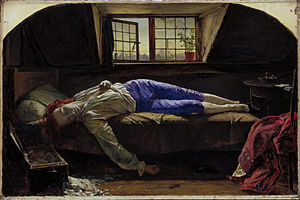
During this era, people begin to idealize the sensitive, suicidal artist who gives all that they are to their art.
This ideal is embodied in the lives of many artists who died young, often by their own hand, and the trope lives in on in the way we idealize sensitive artists now. It is not a healthy trope. We should want artists to be healthy and whole. But to do that, we would need to recognize that there is life outside of art, and that art is not the end all be all.
But in this era, art becomes the end all be all. And the artist becomes the Christ figure. The results are heart breaking.
But not all artists were self centred nihilists, and not all Romantic art was forgetful of its religious roots…
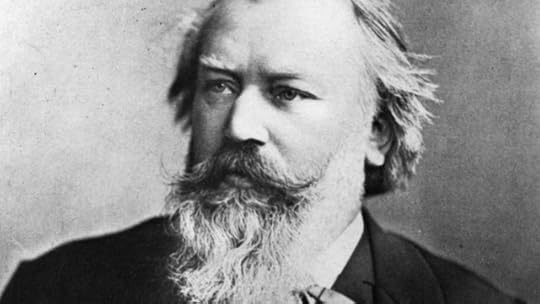
Johannes Brahms 1833-1897
In Brahm’s German Requiem (1868), Brahm’s explores the hiddenness of Christ when we experience grief, and beautifully encapsulates the longing for resurrection.
3. Visual — Pre-Raphaelites in the Past and Present
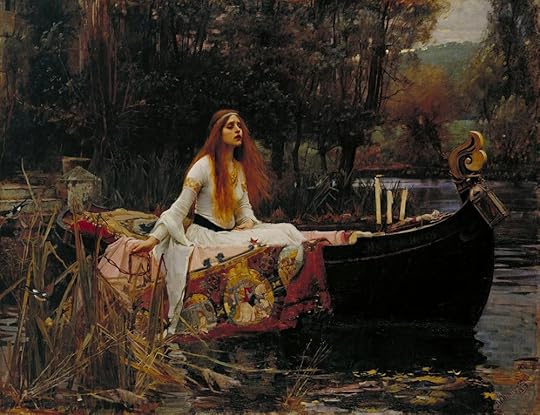
The Lady of Shallot, John William Waterhouse, 1888.

Boreas, John William Waterhouse, 1903
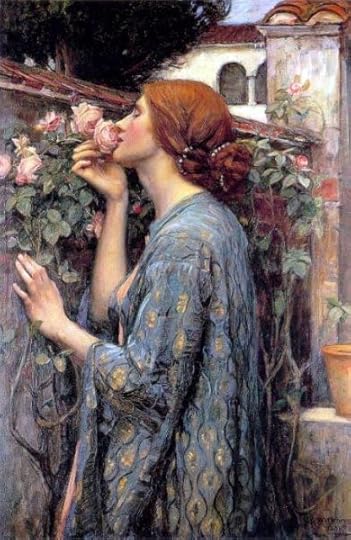
The Soul of the Rose, 1908
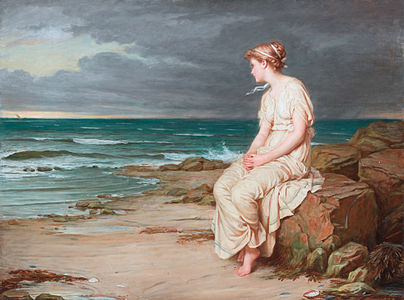
Miranda, John William Waterhouse, 1875
Notice how differently he paints this same scene 41 years later… the Romantic, and particularly the Medieval elements are increased ten fold.
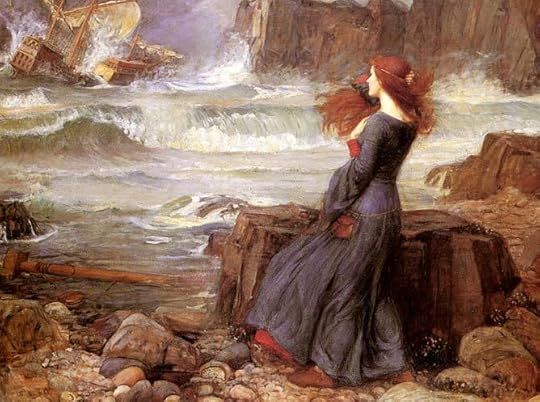
Miranda, John William Waterhouse, 1916.
Pre-Raphaelites in the Present Day…Lord of the Rings, a case study
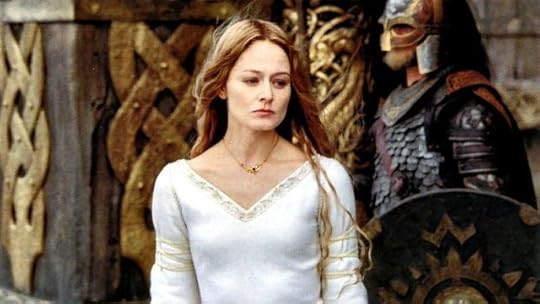
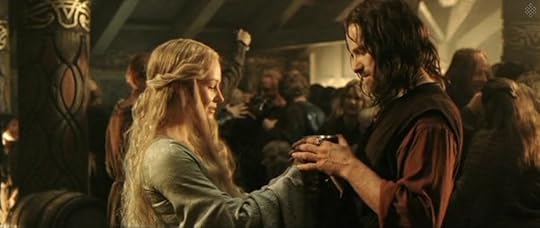
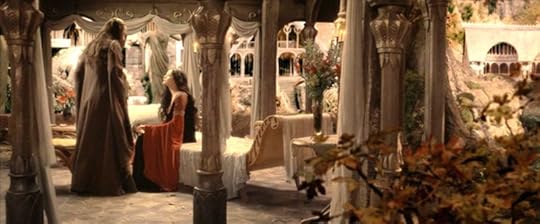
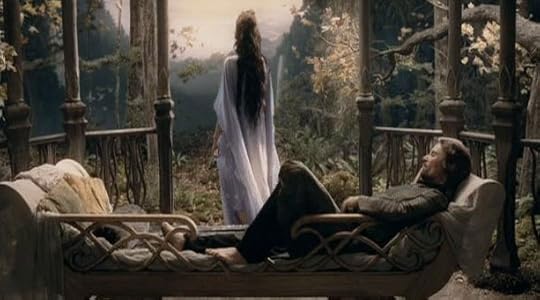
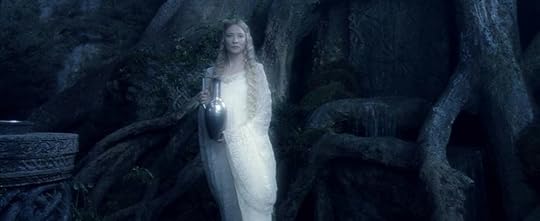
In many ways, the Romantics were wise ahead of their time.
They saw the danger of regarding the world as a machine to exploited for profit. They knew that humans naturally longed for union with something far greater than themselves. They saw the Divine reflection in radiant loveliness of creation. But the longing they identified is one with infinite depths. Depths, it seems, that can only be satisfactorily filled by an infinite God. Without an animating principle, a good creator, Nature has no fond feelings towards us. Without a sense of rootedness and propriety, boundless pursuit of desire can lead toward destruction and pain. Without the cross, death is only death. And so, in our world as we reckon with the listlessness of Romanticism, we must learn to follow desire to its final source: an infinite, loving God.
It reminds me of one of my favourite quotes from C.S. Lewis, who, it must be said, had a strong Romantic tendency…
It would seem that Our Lord finds our desires not too strong, but too weak. We are half-hearted creatures, fooling about with drink and sex and ambition when infinite joy is offered us, like an ignorant child who wants to go on making mud pies in a slum because he cannot imagine what is meant by the offer of a holiday at the sea. We are far too easily pleased.
— C.S. Lewis, Weight of Glory
So there you have it! I hope you’ve enjoy this week’s episode. Here are a few things to take from what we’ve learned…
A deeper understanding of our own world and the ways it is shaped by romanticism.
An awareness of the danger that can come from an unhealthy pursuit of desires without an foundation of morality.
A sense of hope, because as long as people open to beauty, they can be open to love, to faith, and to redemption.
Resources from this episode…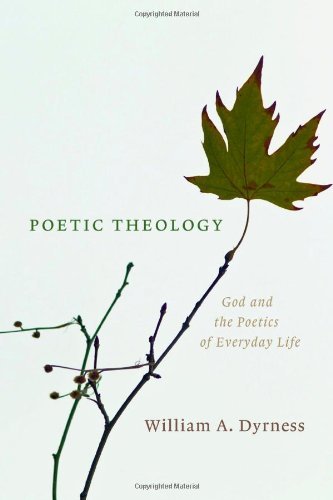
Poetic Theology: God and the Poetics of Everyday Life
By William A. Dyrness
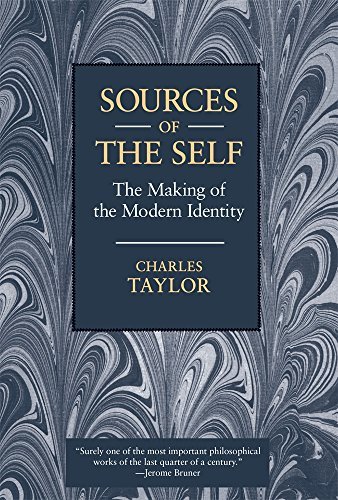
Sources of the Self: The Making of the Modern Identity
By Charles Taylor
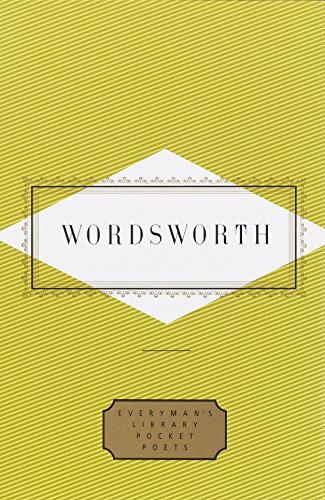
Wordsworth: Poems (Everyman's Library Pocket Poets Series)
By William Wordsworth
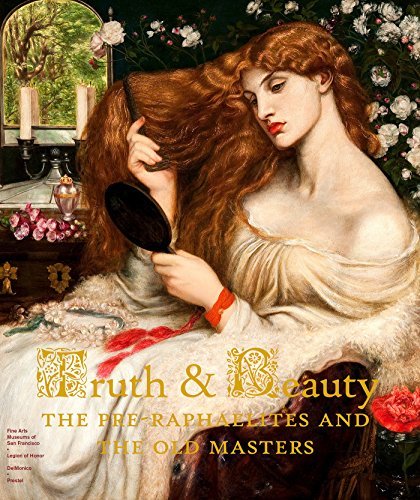
Truth and Beauty: The Pre-Raphaelites and the Old Masters
By Melissa E. Buron
Want to help me finish my Phd?Then support me on Patreon!
My full time job right now is writing my Phd dissertation, and it's not (at the moment) a lucrative business. In short: I am a poor, starving student. God has been kind to me and generous, but I don't have much margin in my life. I love doing this podcast, but it is also time consuming, and something I do instead of working an extra job. By supporting me on Patreon, you help me to continue producing podcasts. You help me cover the cost of time it takes to make these podcasts. Honestly, your support would be a huge encouragement to me.
By supporting me, you help me continue to create podcasts and you help me on my academic journey.
And as a thank you, every week I post secret rewards for you and the other patrons: secret podcasts, newsletters, playlists and more. You can support me for $2 or $10 a month. Check out this link to find out more.
And, as ever, many thanks to the Anselm Society, who work closely with Speaking with Joy!
March 11, 2019
Calling All Artists! A Podcast with Joel Clarkson...

Beauty is the battlefield where God and Satan contend with each other for the hearts of men.
— Fyodor Dostoyevski, The Brothers Karamazov



In a world where only the things that can be counted, quantified, and commodified are valued, it is hard to be an artist.
As a society, we’ve given ourselves over to a utilitarian mindset. We may enjoy a beautiful painting when we see it, or feel heartened by a piece of music, but we prefer to place our value in productivity, efficiency, and financial stability. When we meet someone who claims to be an artist, some will wonder alloud why they didn’t choose to do something that is actually important. Most artists won’t “make it” anyway. What’s the point?
But all this is nonsense.
The world needs artists, craftsmen and women, workers of wonder and beauty.So, today I talked with my brother Joel, a composer, author, and audiobook reader about the calling of the artist in the modern world. We talked about
why the world needs artists
how we should redefine what it means to be a “successful” artist
practical tips for cultivating your soul in seasons where your creativity is dry
how to create art that will enrich your community
This podcast is full of practical wisdom and heartfelt encouragement for anyone who feels called to be an artist. I hope you love it.
Hiking Arthur’s seat. Love this fella!

Joel Clarkson….
Is a composer, author, and all-around artistic handyman. Joel has provided original award-winning music for numerous feature and short films, and has also received high praise as a concert composer and orchestrator. His love for creative writing led him into Christian publishing, where he has co-authored two books, The Lifegiving Home Experience, and A Different Kind of Hero (both with Tyndale Momentum), and has a third in the works with NavPress, on encountering Jesus through the world of our five senses, scheduled for 2021. He has also delved into audiobook narration, where his work on the beloved children’s fantasy The Green Ember was nominated in Audible’s ‘Best of 2015.’ He is pursuing a doctorate in theology at University of St Andrews in Scotland, where he researches the interplay between sacred music and sacramental spirituality.
Find out more about Joel here!
Fun Fact: I often listen to Joel’s music while I study or write…

Music for the Lifegiving Home
Joel Clarkson
Joel is literally the best read-aloud-er. And Audible actually agrees.

The Green Ember
By S. D. Smith

When I asked Joel to send me pictures of the two of us, he also included this picture of our dog Darcy, just for giggles and grins. I though you all might like to see her too. She is such a Good Girl.
See you all next week!
p.s. you can listen to all of my talks from the Girls’ Club Getaways on my patreon over the next month!I’ve already uploaded two of the talks and will upload more soon. The first one is the pre-conference round table chat with me, my mom, and my sister about why we wrote the book and our hopes and dreams for the conference. The second is my talk titled "You Can Go a Little Further" about how the women in my life have called out strength in me that I didn't know I possessed.
In case you don’t know what it is… Patreon is where you can support me through my Phd ($2 or $10 a month), and, as a thank you, get access to extra content. I love doing it, and I’m so thankful for so many people’s support.
Find out more about Patreon here!
Joy Marie Clarkson's Blog
- Joy Marie Clarkson's profile
- 227 followers



